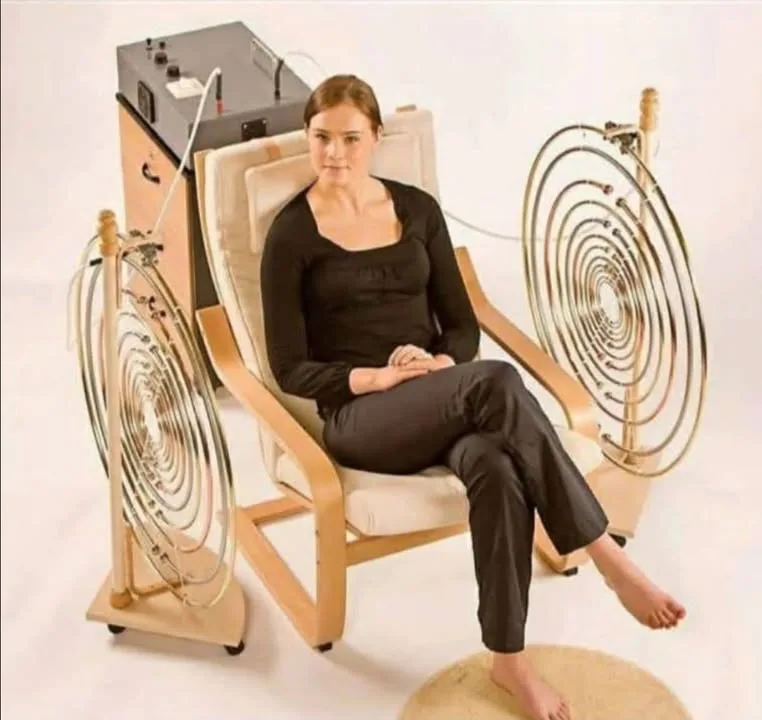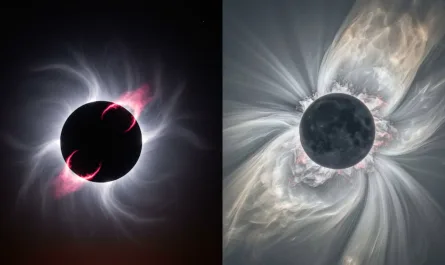In the annals of alternative medicine, few devices are as visually striking and conceptually ambitious as the Multiple Wave Oscillator (MWO). A product of the roaring 1920s, it combines the genius of Nikola Tesla with the radical theories of a man who believed every cell in your body is a tiny radio.
But was the MWO a revolutionary healing machine ahead of its time, or a complex relic of medical pseudoscience? Let’s tune into its fascinating history.

The Visionary: Georges Lakhovsky and His Theory of Cellular Oscillation
Our story begins with Georges Lakhovsky (1869-1942), a Russian-born engineer and inventor with a profound interest in biology and medicine. Observing the world through the lens of physics, Lakhovsky developed a radical central theory:
Every living cell is a microscopic, electromagnetic oscillator.
Think of a cell not just as a blob of protoplasm, but as a sophisticated circuit. In his view, the nucleus and cytoplasm, surrounded by a semi-conductive membrane, acted like a tiny inductor and capacitor, capable of resonating at a specific high frequency, much like a radio transmitter and receiver.
From this core idea, he built his entire philosophy of health and disease:
-
Health is a state where all the body’s trillions of cellular oscillators are vibrating at their natural, harmonious frequencies.
-
Disease, aging, and pathogens (like bacteria or viruses) disrupt this harmony. They dampen the cell’s oscillation, causing it to become weak and chaotic, leading to illness.
The logical conclusion? To cure disease, you don’t need to target a specific germ; you need to recharge and re-tune the cell itself.
The Marvel of Engineering: How the Multiple Wave Oscillator Works
If cells are out-of-tune radios, Lakhovsky needed a universal tuning signal. His solution was the Multiple Wave Oscillator.
The device is a masterpiece of early 20th-century electromechanical design, consisting of two main parts:
-
The Tesla Coil: This is the powerhouse. Named for its inventor, Nikola Tesla, this coil generates extremely high-voltage, high-frequency, but low-current electrical pulses. It’s the same technology that creates those dramatic, crackling lightning bolts in science museums. In the MWO, it provides the raw, energetic pulse needed to drive the system.
-
The Concentric Antennas: These are the most distinctive feature. Two sets of beautifully crafted, isolated concentric brass or copper rings are positioned on either side of the patient. Each ring, being a different diameter, has its own inherent resonant frequency.
The “Magic” Happens Here: When the Tesla coil energizes these antennas, they don’t just emit one frequency each. They emit a complex storm of fundamental frequencies, harmonics, and transients. Lakhovsky claimed that the interaction of all these overlapping fields created an interference pattern that produced an incredibly broad spectrum of electromagnetic waves—from very low frequencies (1 Hz) up to extremely high gigahertz ranges (300 GHz).
The patient would simply sit on a non-conductive stool between the two antenna arrays, being gently bathed in this invisible, broad-spectrum energy field.
The Proposed Healing Mechanism: A Cosmic Tune-Up
So, how was this “energy soup” supposed to heal?
Lakhovsky’s theory was elegant in its simplicity. By exposing the body to this vast spectrum of frequencies, every cell, tissue, and pathogen would be presented with its specific resonant frequency.
An unhealthy or weakened cell, acting like a radio receiver, would “absorb” the energy that matched its natural frequency from the MWO’s broadcast. This absorption would re-amplify the cell’s own oscillation, restoring its electrical vitality and integrity. A strengthened cell, he argued, could then naturally fight off disease and repair itself.
Crucially, Lakhovsky emphasized that the power at any single frequency within this massive spectrum was vanishingly small. It was a gentle “nudge” rather than a destructive shock, intended to stimulate rather than damage.
Historical Claims and the Allure of a Cure
In his time, Lakhovsky and his followers reported astonishing successes. He published case studies and books, like “The Secret of Life,” detailing remarkable recoveries from conditions like cancer, goiter, and chronic pain. These stories, often accompanied by dramatic before-and-after photos, created a wave of interest and hope.
The device’s association with Nikola Tesla (though his direct endorsement is debated) lent it an air of scientific credibility. The MWO itself, with its dramatic sights and sounds—crackling arcs, the smell of ozone, the visible energy—was a powerful piece of theater, perfectly designed to inspire belief.
The Modern Scientific Perspective: Why the MWO is Sidelined
Despite the compelling stories and elegant theory, the Multiple Wave Oscillator is not accepted by modern medicine or science. Here’s why:
-
No Mechanistic Evidence: The core premise that cells function as resonant LC circuits is not supported by modern biology or biophysics. The electrical properties of cells are understood to be far more complex and do not operate in the way Lakhovsky described.
-
Lack of Rigorous Clinical Trials: The early “success stories” are considered anecdotal. There are no double-blind, placebo-controlled studies—the gold standard of medical evidence—that demonstrate the MWO’s efficacy beyond the placebo effect.
-
The Power of Placebo: We cannot underestimate the placebo effect. A patient’s strong belief in a treatment, especially one as impressive as the MWO, can lead to real, measurable improvements in subjective symptoms. The device was a perfect catalyst for this phenomenon.
-
Classification as Pseudoscience: Due to the lack of verifiable evidence and its reliance on an obsolete theory, the MWO is widely classified as pseudoscience and a historical example of “quack” medicine. Its use for treating medical conditions is not approved by any major regulatory body like the FDA.
Conclusion: A Fascinating Relic or a Lost Secret?
The Multiple Wave Oscillator remains a captivating “what if” in the history of medicine. It represents a time when the frontiers of electricity and biology seemed to promise miraculous cures. As a piece of history, it is a testament to human ingenuity and the enduring desire to find elegant, non-invasive solutions to disease.
However, from the standpoint of evidence-based science, it is a ghost in the machine—a device whose proposed mechanisms and efficacy live on only in the realm of unproven theory and powerful belief, not in the hard light of reproducible fact.
It serves as a reminder that even the most beautiful and logically appealing ideas must ultimately bow to the rigorous, if less romantic, demands of the scientific method.





